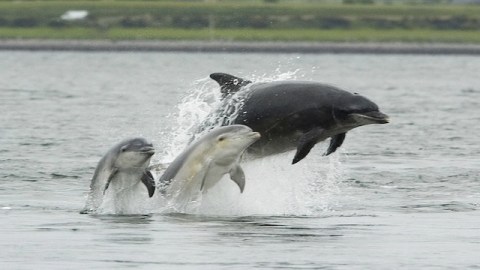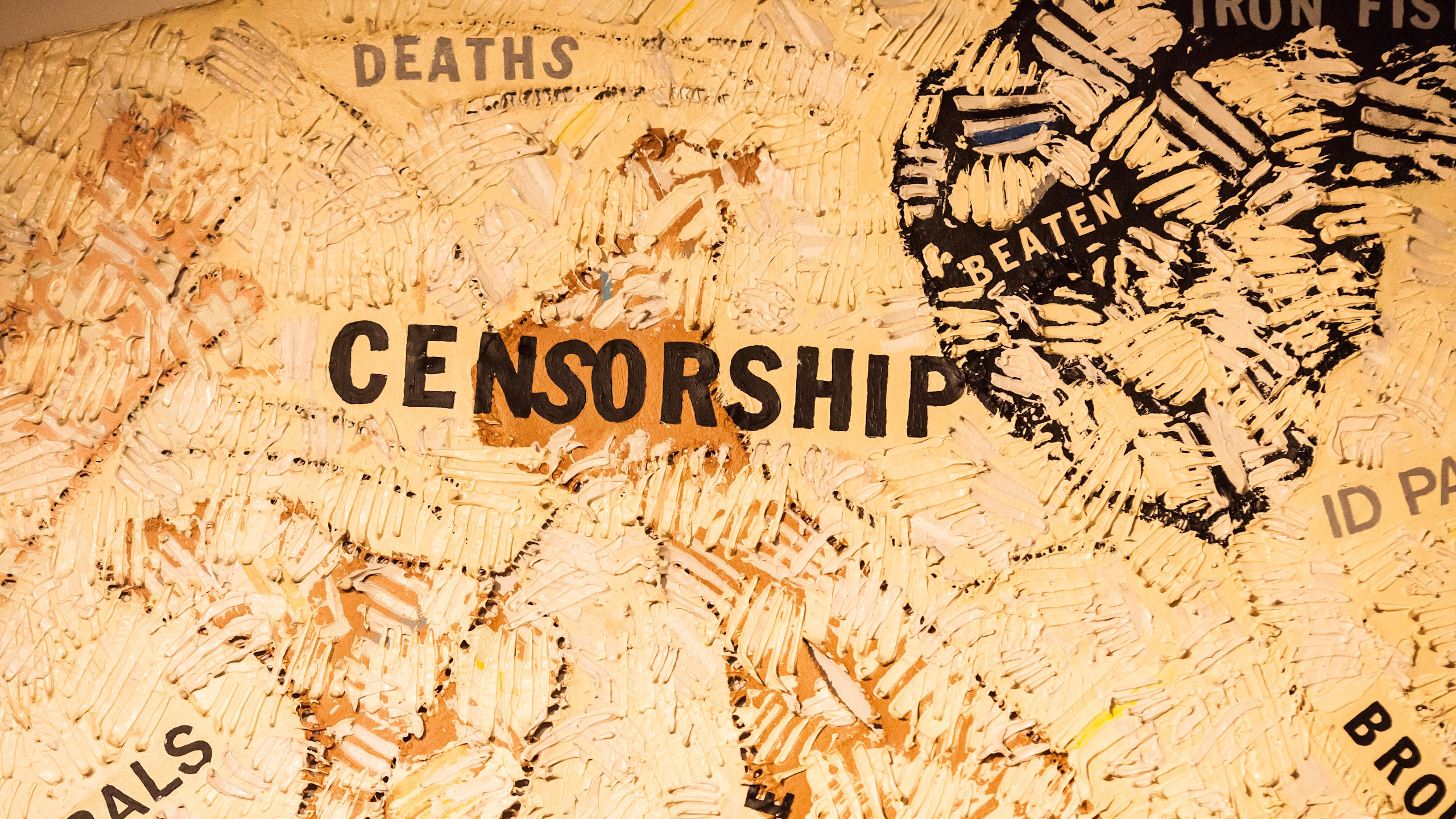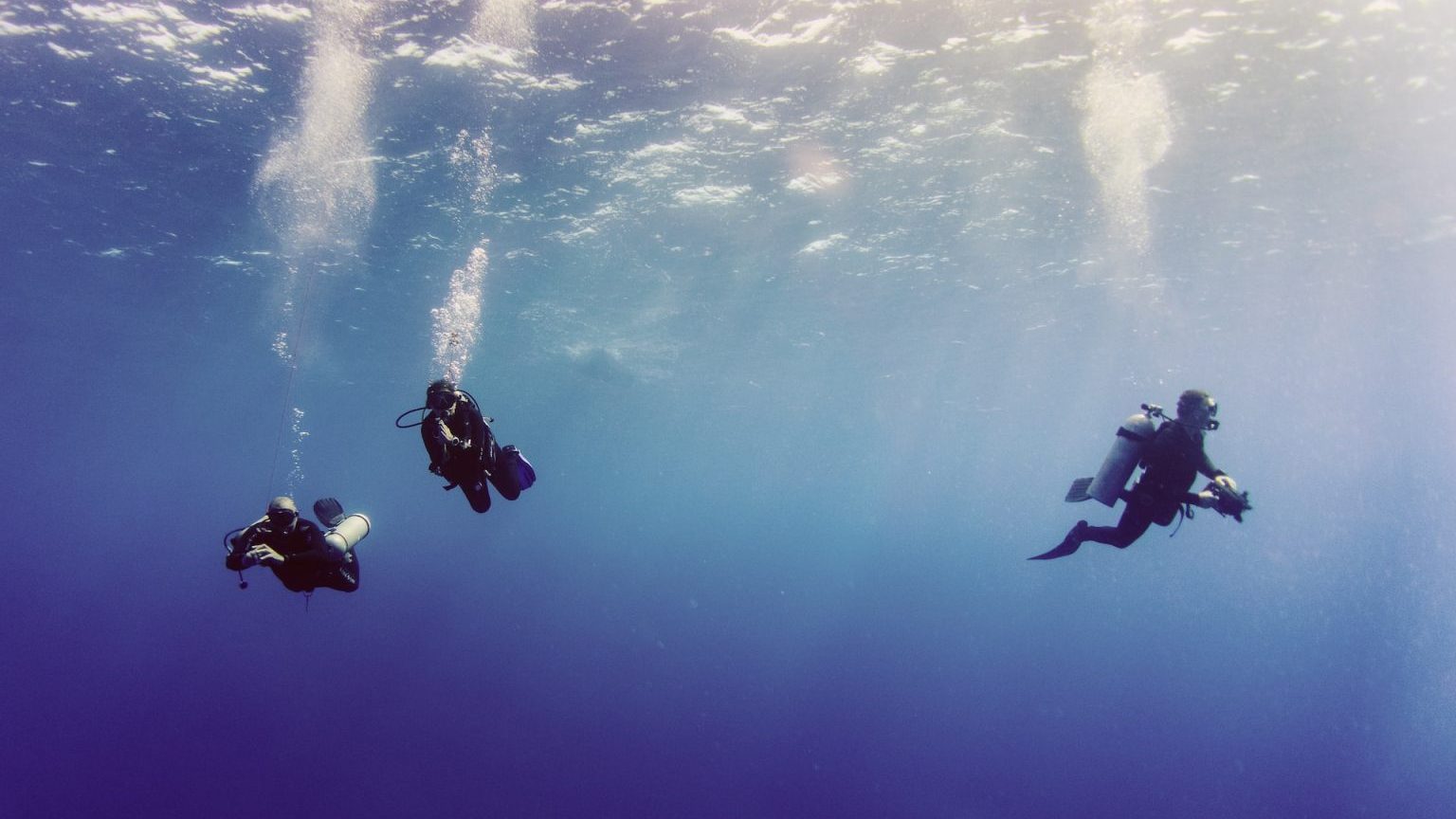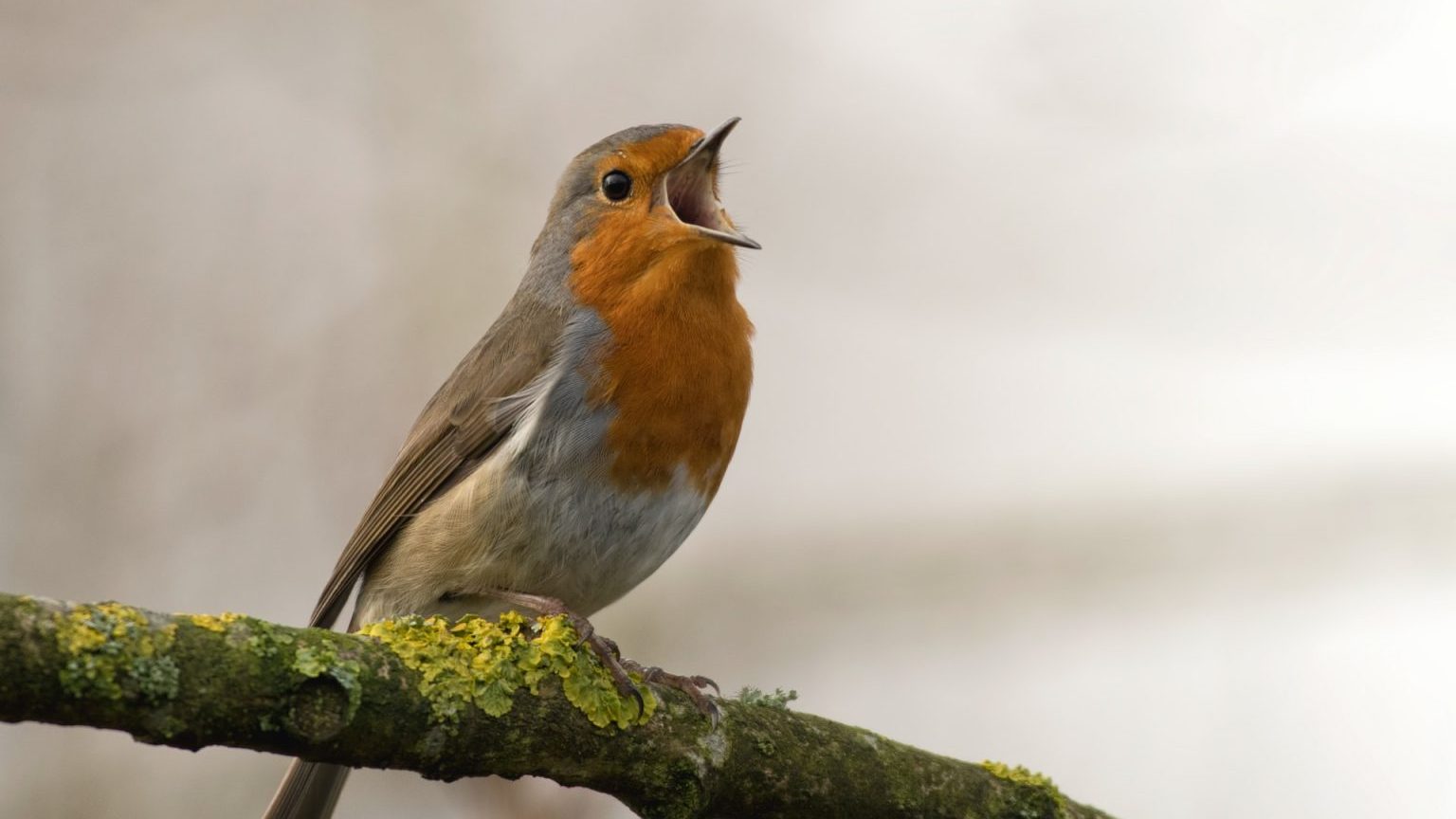Are Dolphins Trying to Communicate Across the Species Barrier?

Every time I see a row of seaside lampposts, each with a single seagull perched on it, I wonder: Do those birds think we built the highway system for them? I suspect the answer’s yes. Each species of animal (like people, most of the time) seems to see the world as if it were made for them alone. Other species are mere objects: this one would be good for lunch, that one’s an information source (think canary in the coal mine), these others are just obstacles in our way (think geese in the engines). This paper in the current issue of Ethology reports an interesting exception to the rule: Two species of dolphins which, when they swim together, replace their usual vocalizations with sounds that seem to fall halfway between their separate “languages.”
Laura May-Collado’s paper, which describes recordings made at the Gandoca-Manzanillo Wildlife Refuge off the coast of Costa Rica, can’t spell out whether the “intermediate” sounds are coming from both bottlenose and Guyana dolphins when the two types swim together. (Her equipment, as reported here, recorded the changed vocalizations, but didn’t have a way of identifying which particular animals were making the sounds). But Guyana dolphins are smaller than bottlenose and get pushed around when the two species swim together, so, May-Collado speculated in a BBC interview, perhaps the Guyanas are trying to ward off or threaten the bullies by coming as close as they can to making sounds the others recognize.
Other scenarios are possible, though. Perhaps both species are making the compromise whistles, whose range and frequency fall between the characteristics of the calls they make when they’re with their own kind. Or perhaps the Guyana, when “talking” to each other about the strangers, imitate them.
None of this is proof that the dolphins are aware that another species consists of creatures that are just as real as they are. But it does look to be an interesting exception to the Earth’s usual species solipsism.
May-Collado, L. (2010). Changes in Whistle Structure of Two Dolphin Species During Interspecific Associations Ethology, 116 (11), 1065-1074 DOI: 10.1111/j.1439-0310.2010.01828.x![]()





